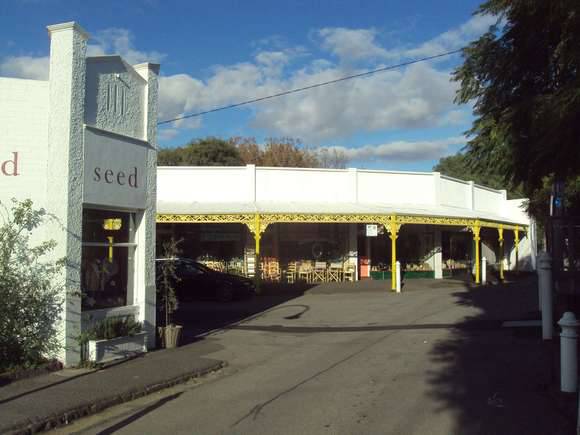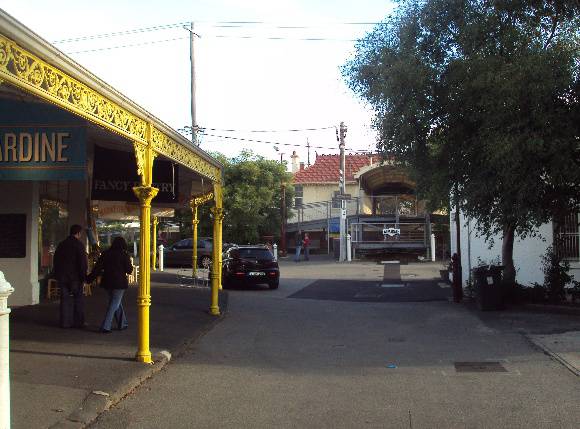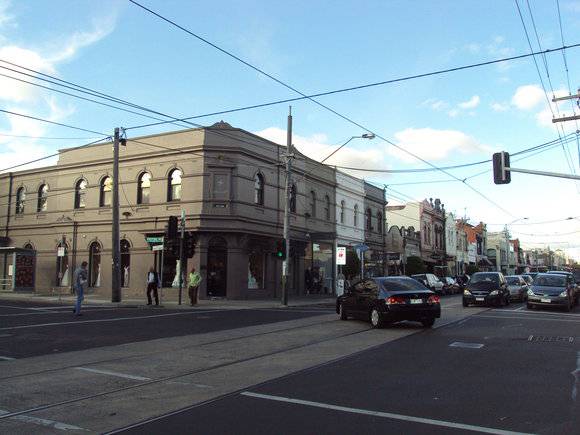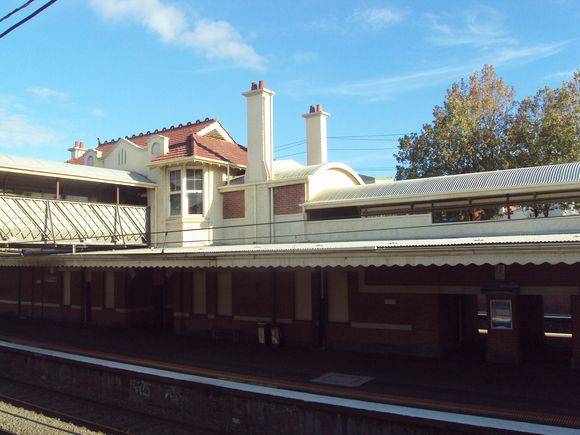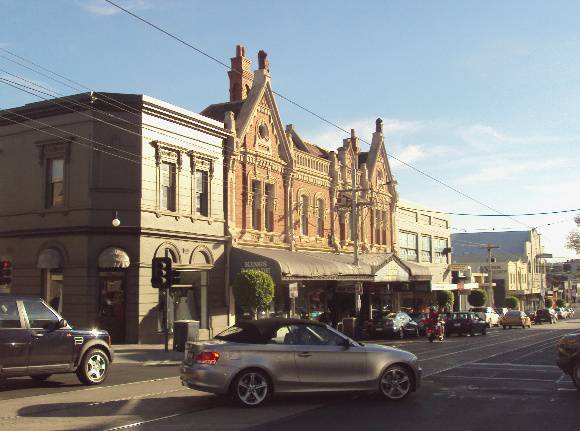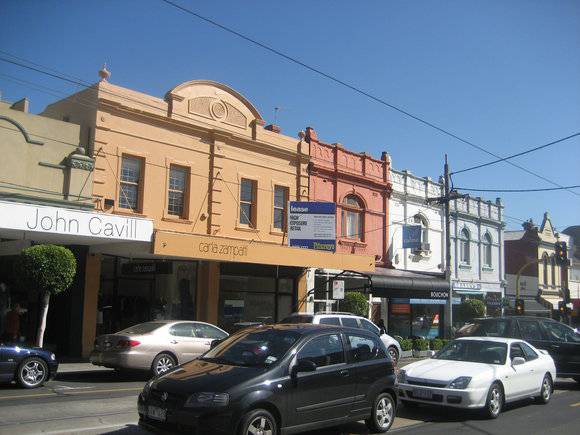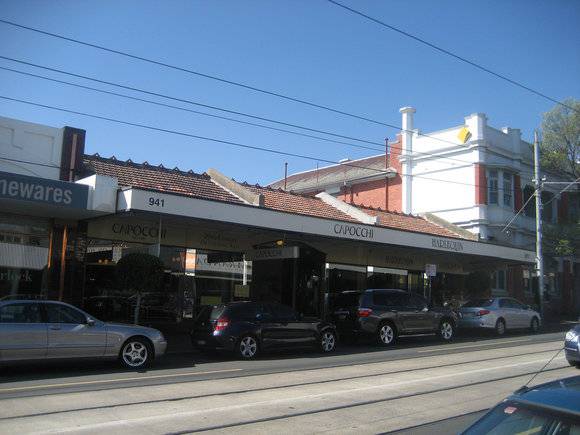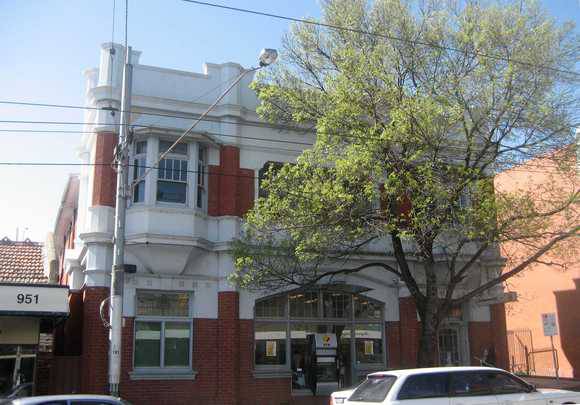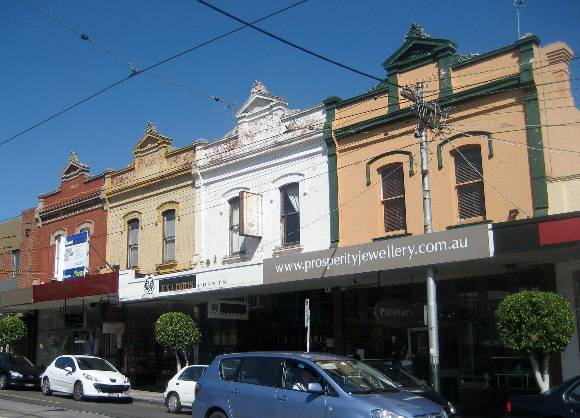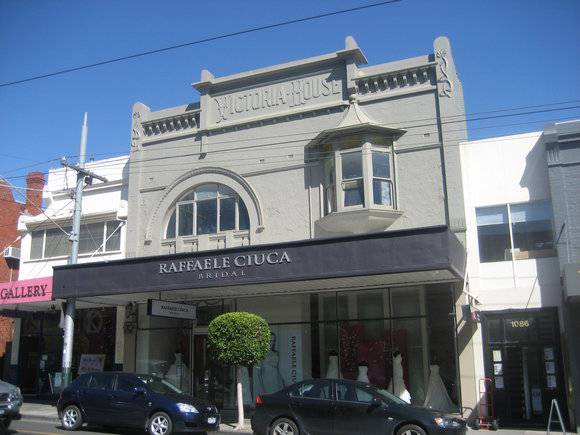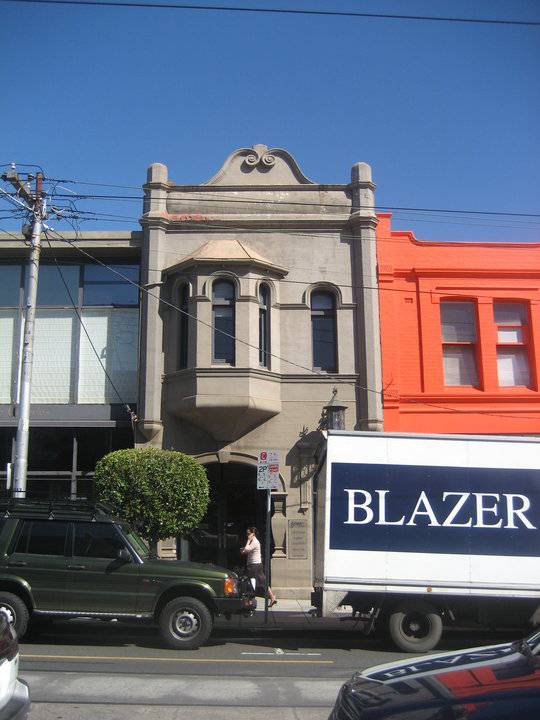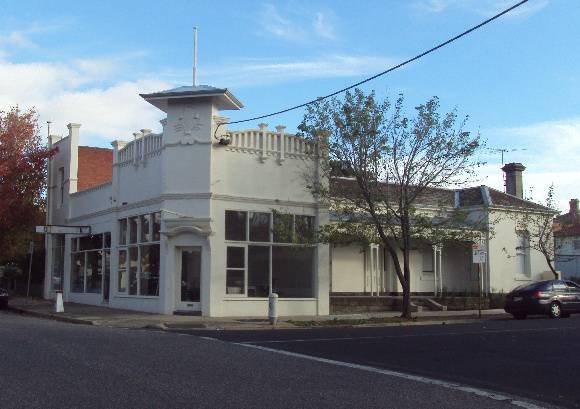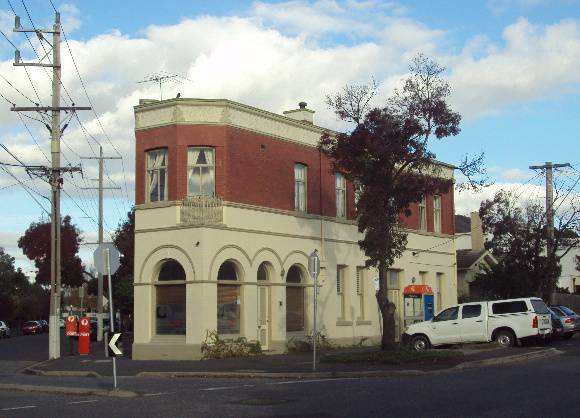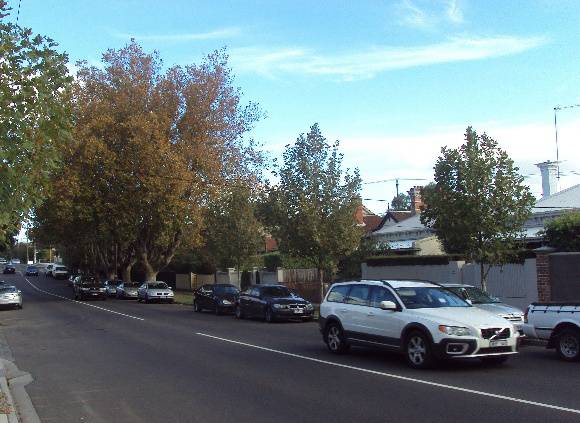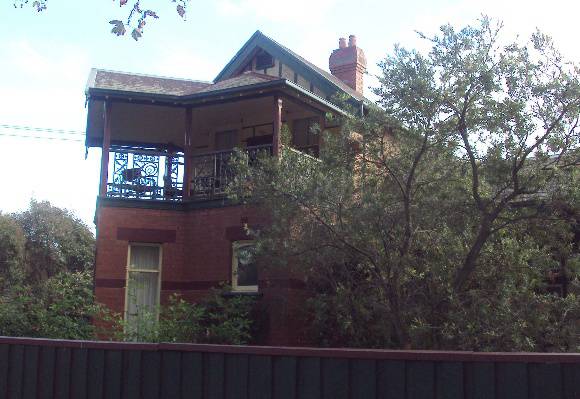| Back to search results » | Back to search page » |
|
High Street Rail and Retail Precinct
Statement of Significance
What is significant? The High Street Rail and Retail precinct is a commercial area comprising a large section of the High Street shopping strip, the Armadale Railway Station, and a small pocket of retail and residential development in the station environs. Suburban development of the area initially followed the opening of the Armadale Railway Station in 1879 and gained momentum during the 1880s land boom. By 1890, areas to the north and south of High Street had been substantially developed for residential purposes and High Street had been largely transformed into a retail and services strip. A range of one and two storey retail and commercial buildings and a smaller number of terrace and villa houses survive from this period and form significant elements within the context of the precinct. The 1910 rebuilding of the railway station (and duplication of the line in 1914) and the expansion of the electric tram line along High Street stimulated further retail and residential development on sites left undeveloped through the recession of the 1890s. The rebuilt station and associated Edwardian retail and residential developments and the smaller number of interwar developments contribute substantially to the significance and the mature c.1920s character of the area. Elements which contribute to the significance of the precinct include (but are not limited to): -Victorian, Edwardian and interwar dwellings, commercial buildings and shops (many originally built with living accommodation over the shop or at the rear). How is it significant? The High Street Rail and Retail precinct is of local historical and aesthetic significance to the City of Stonnington. Why is it significant? The High Street Rail and Retail precinct is historically significant for its longstanding role as the principal commercial centre within the Armadale locality (Historic Theme: 7.1 Serving local communities) and for its capacity to illustrate the major phases of development in the Municipality associated with the 1880s land boom and the Edwardian period of economic recovery and prosperity (Historic Theme: 3.3.5 Recovery and infill 1900-1940). The High Street Rail and Retail precinct is also significant for its capacity to demonstrate the importance of the railway as a catalyst for commercial and residential development together with the electric tram network (Historic Themes: 4.4.2 Developing state railway systems in the late nineteenth century, 4.5.2 Prahran-Malvern Tramways Trust). The station itself is an element of high individual significance and, in combination with similar stations at Toorak, Malvern and Hawksburn, also contributes to a historically significant group of stations along the line (Historic Theme: 4.4.3 Twentieth century improvements). In addition, the High Street Rail and Retail precinct is of interest for its capacity to demonstrate changing patterns of shopping in the post war period through its reinvention as an up-market retail area specialising in antiques (Historic Theme: 7.2 Creating specialised shopping centres). The High Street Rail and Retail precinct is aesthetically significant as a well preserved example of a late nineteenth and early twentieth shopping strip. Many retail buildings in the precinct survive to a high level of integrity at their first floor facade level while some have early shopfronts which make an important contribution to the early character of the area. The precinct is also noteworthy for the diversity of architectural styles which are encountered along the length of High Street, including: late Victorian Italianate boom period shops; Edwardian shops with Art Nouveau influenced detailing; and, interwar Moderne style commercial premises. Nonetheless, the streetscape maintains an overall sense of visual continuity through the consistent use of parapeted facades with uniform front setbacks, similar wall materials and similar scale. The aesthetic significance of the precinct is enhanced by the presenceof some individually noteworthy buildings including Kings Arcade (HO57), the former Armadale cinema and the Armadale Railway Station. The station environs are notable for their largely intact Edwardian retail buildings (including the unusual curving facade and cast iron verandah at 11-13 Morey Street), the narrow width of Morey Street and its irregular alignment, and the pedestrian link to Kings Arcade, all of which combine to create a unique early-twentieth century transport and retail hub. The nearby streetscape of Victorian and Edwardian dwellings on Kooyong Road also makes an important contribution the historic character of the precinct.
-The Armadale Railway Station buildings and associated platforms and elevated walkways and the extent and form of its curtilage arising from the 1910 redevelopment and 1914 line duplication.
-The visual and physical connection between the railway station and adjacent shops, including the pedestrian link through to Kings Arcade.
-The generally high integrity of upper level facades and original detailing and finishes typically comprising face brick or render.
-Retail buildings with roofs concealed by parapets or less typically exposed transverse gabled roofs with terracotta tile cladding.
-The consistent one or two storey scale of retail buildings.
-The attached form of retail buildings with no front setbacks and similar facade widths creating a repetitive module.
-The form and fabric of surviving early shopfronts, typically built with large timber or metal framed display windows above stall boards, smaller highlight windows (often with leadlight glazing), glazed ceramic tile surfaces, and recessed doorways.
-External signage generally restricted to verandah fascias or suspended from the underside of verandahs.
-The limited number of modern internally illuminated signs.
-The absence of on-site vehicle accommodation in the front setbacks of commercial buildings, including driveways and crossovers.
-Road alignments and allotment patterns resulting from nineteenth and early twentieth century subdivisions.
-Bluestone kerbs and channels.
-The detached villa form and consistent single storey scale of the residential buildings on Kooyong Road (the villa at 81 Kooyong Road with the unusual upper level balcony being a valued exception)
-The verdant landscaped character of the Kooyong Road residential streetscape resulting from undeveloped front setbacks and nature strips with mature street trees.
Group
Residential buildings (private)
Category
Residential Precinct


